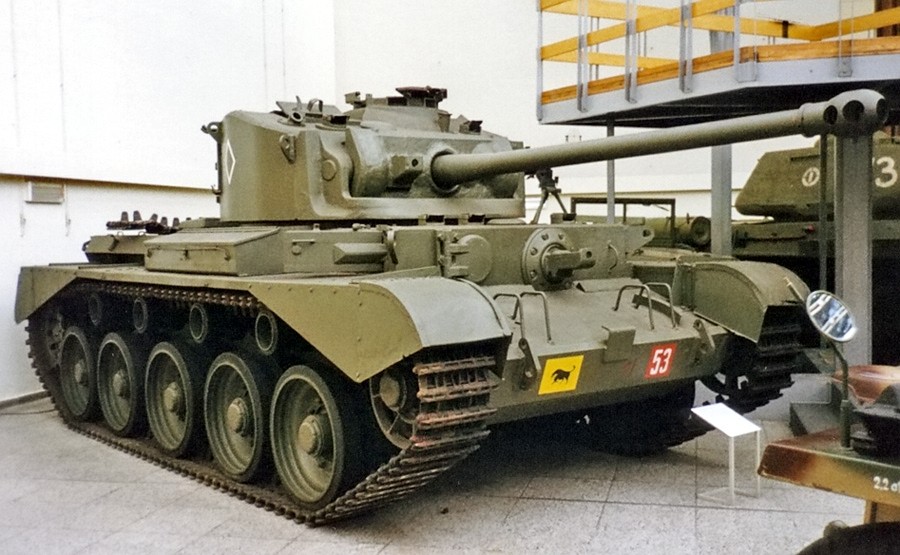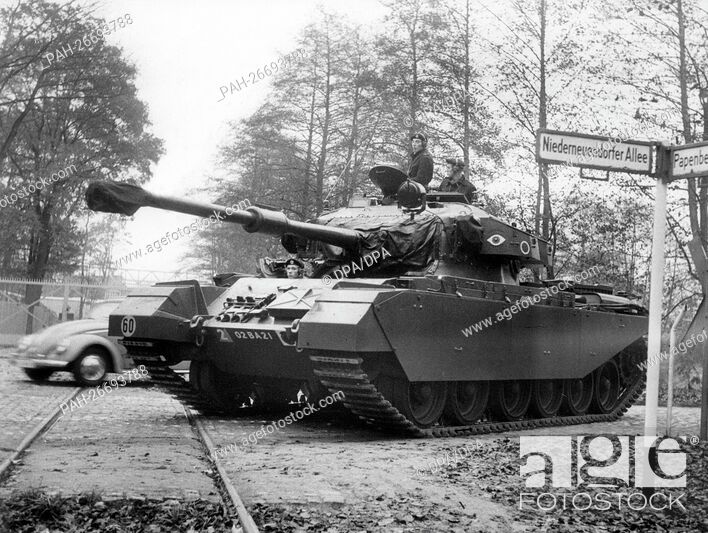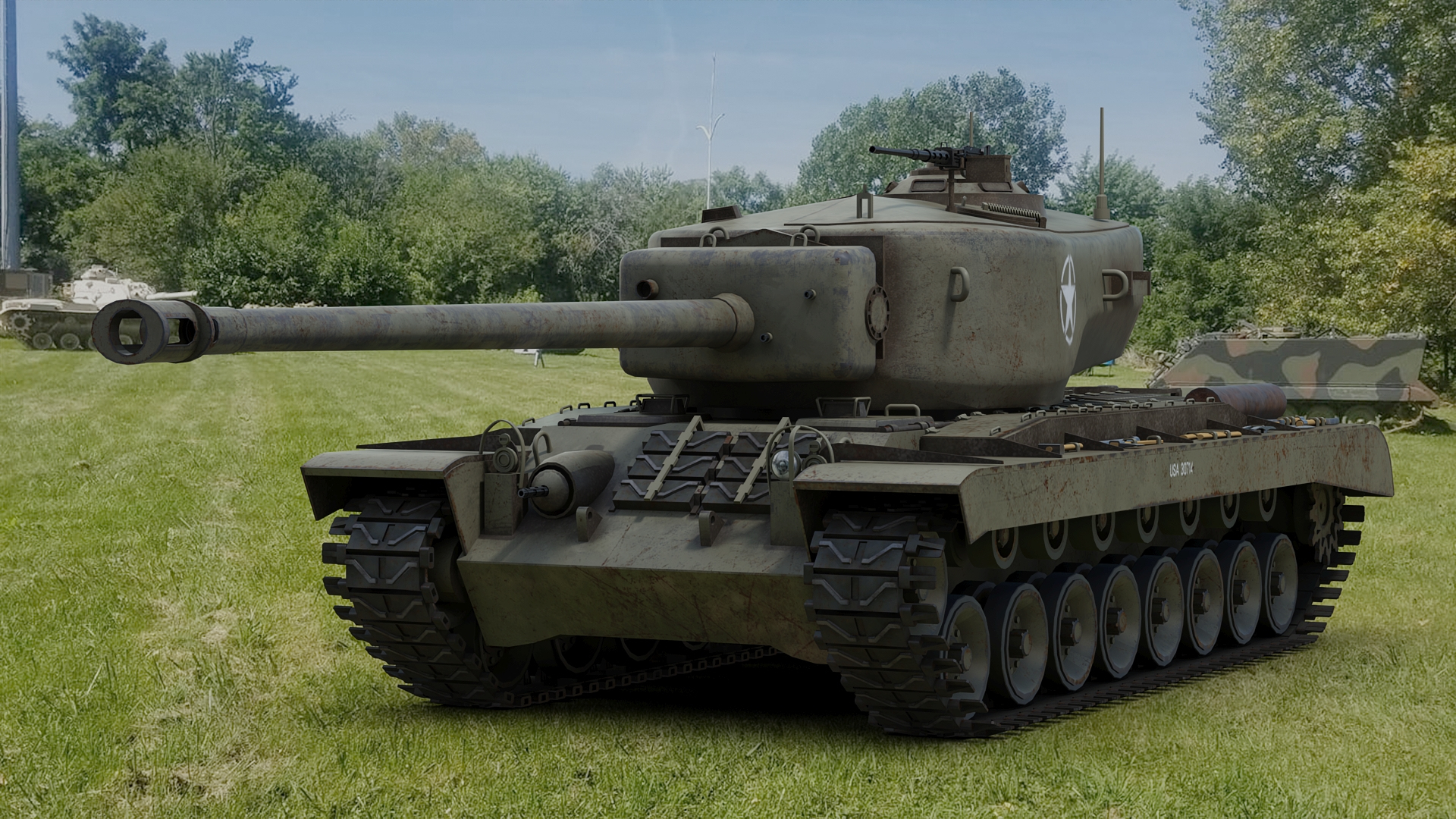Not quite true.
The language gives you away. The armd division had ARMOURED brigades (ie cruisers) and infantry (corps) was supported by TANK bdes (ie infantry tanks).
Only later, did British Armd divisions be reorganised into "balanced" formations. A process Germany a lot went through. British inf divisions were pure for most of the war, except a finite period mid war, while trying out a mix with a 2 inf / 1 tank bde. This structure was a failure.
For most of the war, British infantry divisions had a ratio of one regiment (cav) / battalion (RTR) attached from a corps Tank bde. This being the Churchill for the second half of the war. The original Churchill having both 3" howitzer and 2 pdr AT, was very much an slow ASSAULT tank. Not a tank on tank.
The 2 pdr on all AFVs never really fitted with any doctrine the British had ( and in reality had none). 2 pdr was compromise with infantry to find a gun. The inter-war medium had a 47mm 3 pdr. RTR developed a lot of concepts of mobile warfare, while cavalry regts were still fighting to keep horses. But it was mechanised cavalry regts driving a lot of bad procedures of RAC. Especially in the desert. As said they ever truly had a functional doctrine.
As you said, the centurion was a heavy cruiser, ie for armd divisions. It became a universal tank, partially by default, as tank bdes were abolished, post war.
Ps Germans had Pz 3 & 4 for a reason. Pz 3 was AT tank (in 3 coy) and Pz 4 was the support tank ( in last company of bn). Tiger 1 started off as breakthrough tank, and served mainly in independent bns. They never had a true " universal " either.
The Pre war desired structure was for a binary division - its discussed in the 39 cabinet papers on rearmament the confusion arises because a) in the 1939 the division is not reorganised from its pre war structure it is however relabelled from The Mobile Division to the Armoured division.
While the actual reorganisation is later the intention is there from the start and the distinction between Cruiser and I tanks from the start as they are functionally different roles which cannot be achieved with the same vehicle at the time.
The problem with the armoured Bde Tank Bde distinction is its interchangeable and for example 21 Amd Bde in all its designations never serves within an amd div. 8th armoured Bde serves with 3 different Amd Div in North Africa but lands in Normandy as an independent Bde.
Theoretically but not really. For example at Alamein 8th army has 1 amd Bde of reforming units at Army level , X corps has the amd divs. 10th which operates with 2 amd bde ( the third with the NZ div) 1 inf Bde 8th has all its combat Bde detached elsewhere, 1st operates with 2 Bde ( and hammerforce) one each inf and amd.
VIII corps has 7th amd 44 and 50 ID. 7th amd has 2 Bde Group and a lorried Inf Bde. which comes from 44 ID. Another of 44 ID bde is with 10th Amd but it gets French bde Grp. 50 ID has 4 Bde, 2 British one each French and Greek.
XXX corps - which is the main assault force has 5 ID and an army tank bde but of 4 tank bn, one retained at corps one each with 1 SA, 9 Aus, 51 ID. 2NZ has a tank Bde of its own for its 2x 4bn inf Bde annd a bn of stuarts in the divisional cavalry bn 4th Indian has no attached tanks. 9 Australian has the Bn from corps but its own Div level RTR, the detached amd bn being subordinated to one Bde, Their cav Bn has crusaders BTW, 51 ID has its attached RTR from Corps.
The Mixed Div is a short term experiment, again before and after it was a 3 bde inf div with amd attachments, usually at least 1 bn per div but possibly more.
This is not neat it is however the British Army.
By 1944 in NW europe there are 8 non divisional Amd Bde Sized units, 5 with Shermans 3 with Churchills and while the Churchill is conceived of as an assault tank that requirement is dropped in 1940 and replaced with the A22 spec which is the Churchill but designated as a Heavy Infantry tank. But it exists as kind of a prototype noone likes much until it is discovered that its actually a heavily armoured mountain goat that can carry bridges and flamethrowers.
The British did have a very clear tank doctrine, lots everywhere with a few fast ones kept in the exploitation force and its in the pre war service regulations in which the 2lb fits reasonably well. What it does not have is enough tanks to implement it in active theatres until 43. One f the reasons for attaching the Tank Bn down to divisions is it adds a lot of armoured mobile AT guns to the attacking ID to deal with an armoured counterattack the British being confident that their artillery and infantry firepower would be able deal with the unsupressed machine gun.
Someone will say HE vs AT guns but any armoured formation that tries to duke it out with an AT ambush will lose, badly anyway.
The Desert is misleading for three reasons, one is Hobart who is away with the fairies which is why he was fired in the UK but gets to implement his wrong notions of warfare with Western Desert force, after OConnor who fights per doctrine is out of the picture and Wavell too distracted. The converted cavalry regiments had in fact been cavalry regments until the tanks arrived serving in Palestine unlike the regiments in the UK which had been armoured for years and then Compass works so everyone thinks thats all right then, until the Grown ups from England arrive and push them back onto doctrine. and destroy PAA in about a month.


